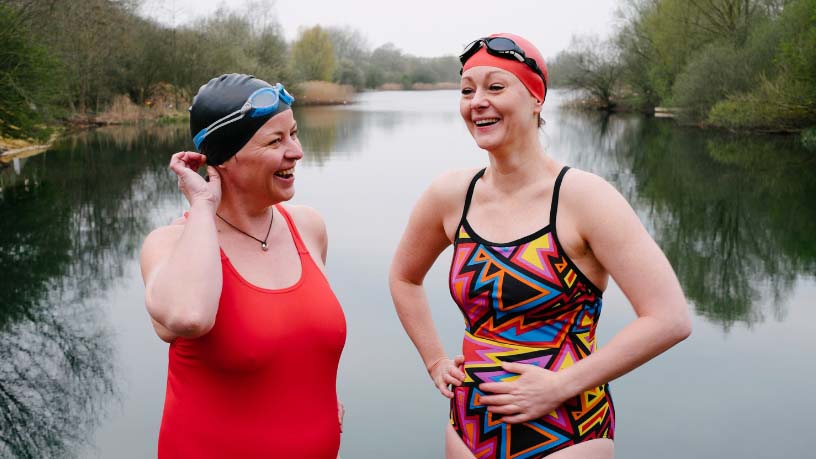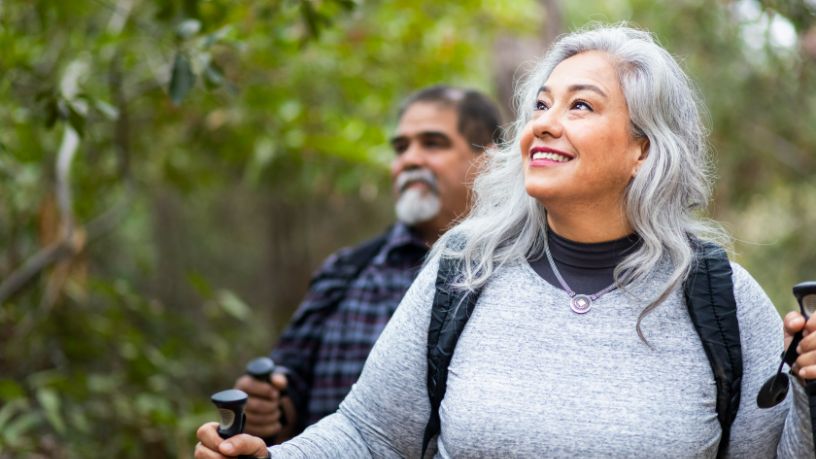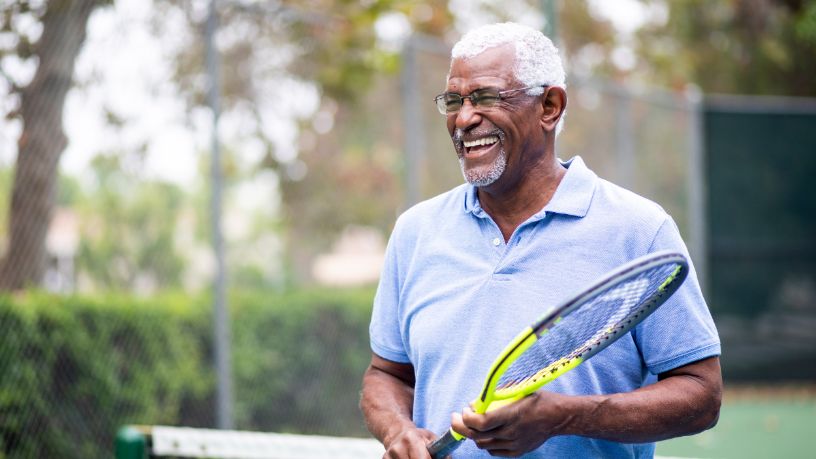Strength training can start with the use of just body weight to help build lean muscle.
On this page
Key takeaways
We need muscles to enable us to do basic, everyday movements such as sitting and walking.
Strength training can help reduce the risk of developing osteoporosis and improve overall health and wellbeing.
From helping to maintain a healthy weight to protecting our bones, strength training is an essential part of staying fit and well as you age.
Long gone is the outdated idea that only men can occupy the weights area at the gym, or that you’ll “bulk up” if you start lifting.
Weight, strength or resistance training on a regular basis has multiple health benefits for women at every age.What is strength training?
If you’re new to strength training, don’t imagine that you need to be able to lift the gigantic dumbbells that only an Olympian could hope to get off the ground. The reality is much more achievable.
Strength training involves using any weight or resistance to strengthen muscles and improve overall fitness, balance, immunity, bone density and even mental wellbeing.
But what sort of weight and resistance are effective?
The good news about strength training is that you can start with zero equipment. Your body weight can provide adequate resistance for beginners, especially when doing exercises such as push ups, squats or triceps dips.
Resistance bands are also an option. You can buy these stretchy pieces of material in several types that provide more or less resistance to suit your needs. Handheld dumbbells are also a great intro to strength training, starting from as little as 1kg in weight.
All of these strength building options can be bought quite affordably from large retailers, but if you don’t want to invest any money, you can use almost anything that you can pick up as extra weight. Think cans of food or milk containers filled with water or sand.
It’s a good idea to get some advice from a certified personal trainer or exercise physiologist before starting any new exercise program. Good form and technique are key for preventing injury and you can request a program designed for you and your needs that you can do yourself at home or in the gym.
Ask at your local gym or fitness centre about personal trainers or get a recommendation from a friend.Why should we do strength training?
Strength training helps to build and maintain muscle mass in our bodies. We need muscle to help our bodies perform everyday functions, such as walking, sitting, standing, and even thinking and cognition. There are more than 650 muscles in the body that work with bones to allow us to move easily and well, even into old age.1
Strength training can also reduce the risk of developing type 2 diabetes, heart disease, obesity and depression.2
Strength training and healthy bones
As we age, women and people who experience menopause are more at risk of developing osteoporosis than men and people who do not. This condition results in weak bones that are prone to fractures.3 This is partly due to the drop in the hormone oestrogen during menopause, resulting in an average of 10% loss of bone density in the first 5 years post-menopause.4
Health guidelines recommend doing 30 to 40 minutes of exercise per day, including some weight-bearing or resistance training twice a week. As well as helping to maintain overall strength and balance, which can help prevent falls and breaks, research shows activities that put stress on bones, such as stair walking, brisk walking, running, skipping and other weight bearing exercises, can activate bones to become denser and stronger, and help to slow any age-related bone loss.5
Member Health Programs
Discover health cover that's right for you with a range of personalised programs and services designed to support your health and wellbeing.
3 strength training myths
“Lifting weights will give you bulky muscles”
It takes body builders years of intensive training and nutritional support to build big muscles. What consistent strength training can do is reduce your overall body fat and increase your muscle mass, resulting in a more toned physique.6
“Muscle weighs more than fat, so you’ll put on lots of weight if you do strength training”
A kilo is a kilo, whether we’re talking muscle or fat. But because muscle is denser it takes up less space on your body. This might result in the scales showing you weigh slightly more, while at the same time your clothes fit better.
“If you stop training, your muscles will turn to fat”
This is a bit like saying your tea will turn to coffee if you use the same cup. Muscle and fat are 2 completely different structures of cells, and one can’t magically turn into the other. If you stop training your muscles may decrease in size, but they won’t turn into fat.7 However, it is true that as we age our metabolism can slow down and we may be more prone to gaining weight even if we eat the same amount, making regular exercise even more important.8
Resources
Healthy Bones Australia have examples of exercises that help build stronger bones and bodies, all of which are suitable for beginners, plus resources on how to help reduce your risk of osteoporosis.
The Australasian Menopause Society has information on the link between menopause and osteoporosis and where to get help.
The Personal Trainers Association of Australia can help connect you to local trainers who can help guide you safely on your exercise journey.
At Bupa, trust is everything
Our health and wellbeing information is regularly reviewed and maintained by a team of healthcare experts, to ensure its relevancy and accuracy. Everyone's health journey is unique and health outcomes vary from person to person.
This content is not a replacement for personalised and specific medical, healthcare, or other professional advice. If you have concerns about your health, see your doctor or other health professional.
1National Institute of Arthritis and Musculoskeletal and Skin Diseases. (2024). Health lesson: Learning about muscles. National Institutes of Health.
2Better Health Channel. (2022). Resistance training: health benefits. Victoria State Government.
3Australian Institute of Health and Welfare. (2014). Estimating the prevalence of osteoporosis in Australia. Australian Government.
4Better Health Channel. (2024). Menopause and osteoporosis. Victoria State Government.
5Harvard Health Publishing. (2024). Strength training builds more than muscles. Harvard Medical School.
6Capritto, A. (2021). Does lifting weights make women bulky? The myth that won't die. CNet.
7Loews, B. (2022). If you stopped exercising today, here's how long it would take your body to notice. Forbes.
8Better Health Channel. (2023). Metabolism. Victoria State Government.
You might also like...
5 ways women can support healthy ageing
Small changes to your daily life can have a big impact on your health as you age. Discover 5 ways to support women’s healthy ageing.
5 tips to start exercising (and stick with it)
Exercising regularly is one of the best things you can do for your health, but it’s not always easy to get started. Try these 5 tips to help get moving.
Exercise: Motivation and overcoming blockers
Staying motivated can be hard when you hit that dreaded exercise ‘blocker’. Find out how to overcome it and reach your fitness goals.
The health benefits of tennis
Tennis is often referred to as the sport of a lifetime. It serves up a variety of health benefits that researchers suggest may help you live longer.





